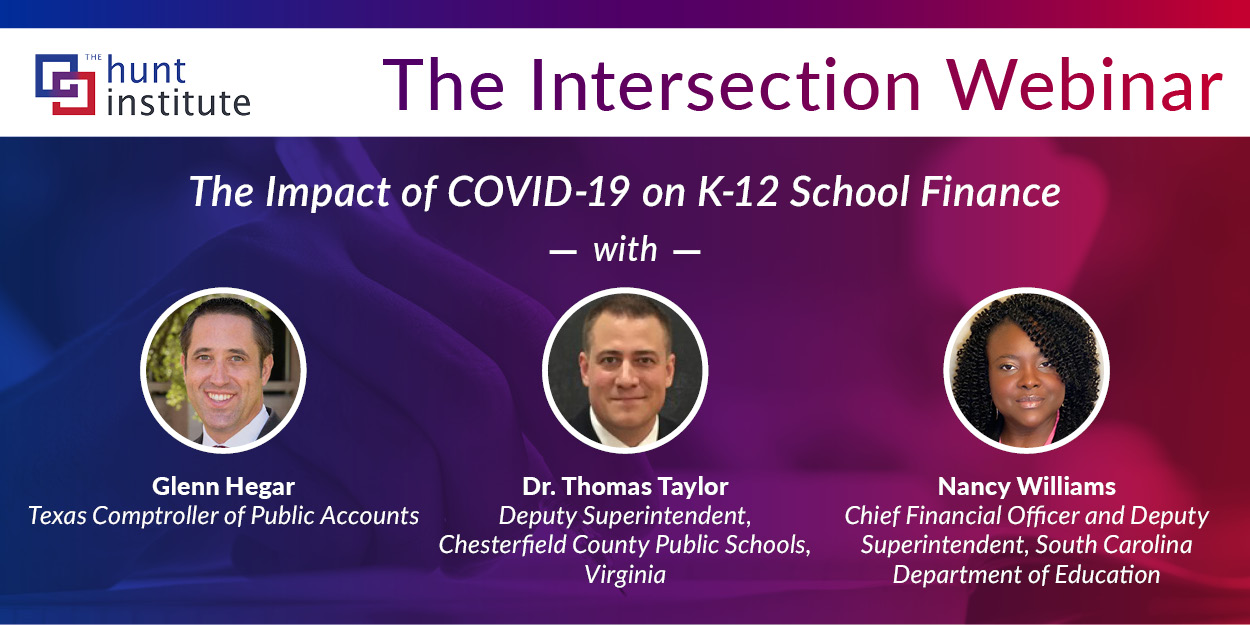
Families across the nation are feeling the economic impacts of COVID-19, with unemployment rates peaking at an all-time high of 14.7% in April. As a result of this, state revenues have taken a significant hit, thus leaving policymakers wondering how states and districts will adequately fund school operations and the many unknown student supports that are sure to be necessary, but for which we currently have no accurate cost assessment for the coming school year.
This week we were joined at the Intersection by Glenn Hegar, Texas Comptroller of Public Accounts, Nancy Williams, Chief Finance Officer and Deputy Superintendent of the South Carolina Department of Education and Dr. Thomas Taylor, Deputy Superintendent of Chesterfield County Public Schools in Virginia. This panel of district- and state-level experts offered diverse perspectives on how school finance practitioners may be adjusting their approach in the midst of the budgetary challenges brought on by the COVID-19 pandemic.
Key Takeaways
- State Education funding models are as variable as they are complex. While South Carolina, Texas, and Virginia differ in the way each state funds its education system, it is clear that the economic impact of COVID-19 will put a strain on systems regardless of whether or not they are funded primarily at the state or local level.
- As states and districts are approaching their budgets for the 2020-21 school year, many are doing so with an eye toward lessons learned from school closures in 2019-20. With an increased focus on ensuring student’s basic needs are met, including nutrition along with physical and mental health needs, districts are seeking to decrease the barriers to learning for all of their students.
- Staffing is typically the largest budget item in education, and states and districts differ in how these positions are allocated. This cost will likely grow as schools are considering social distancing policies once in-person learning resumes.
- The increased demand for personal protection equipment and cleaning supplies needed to safely reopen schools in the fall requires additional state-level support to ensure districts can acquire these items in the face of continued supply chain challenges.
- Districts must be intentional about how they are spending federal relief funds. While the federal government has given broad discretion in how COVID relief funds may be spent, documentation of this spending will be key to ensure that districts are not required to pay back funds as a result of improper allocation.
- States and districts should consider implementing methods to track their use of funds and their impact, including disaggregating data to ensure initiatives are addressing issues of equity.
- Equity must be at the forefront of decision making at the state and district level. Ensuring that schools are equitably funded has been an issue nationwide for decades, and states and districts should see this as an opportunity to be innovative and strive to develop new funding models such that all students have access to a high quality education.
To find out more about Comptroller Hegar, Deputy Superintendent Williams, and Dr. Taylor’s perspectives on how states and districts are approaching K-12 Finance in the COVID-19 era, please check out the full conversation below.


